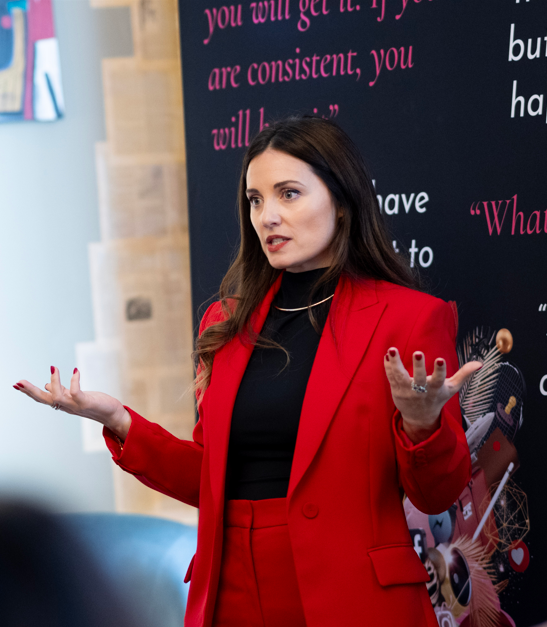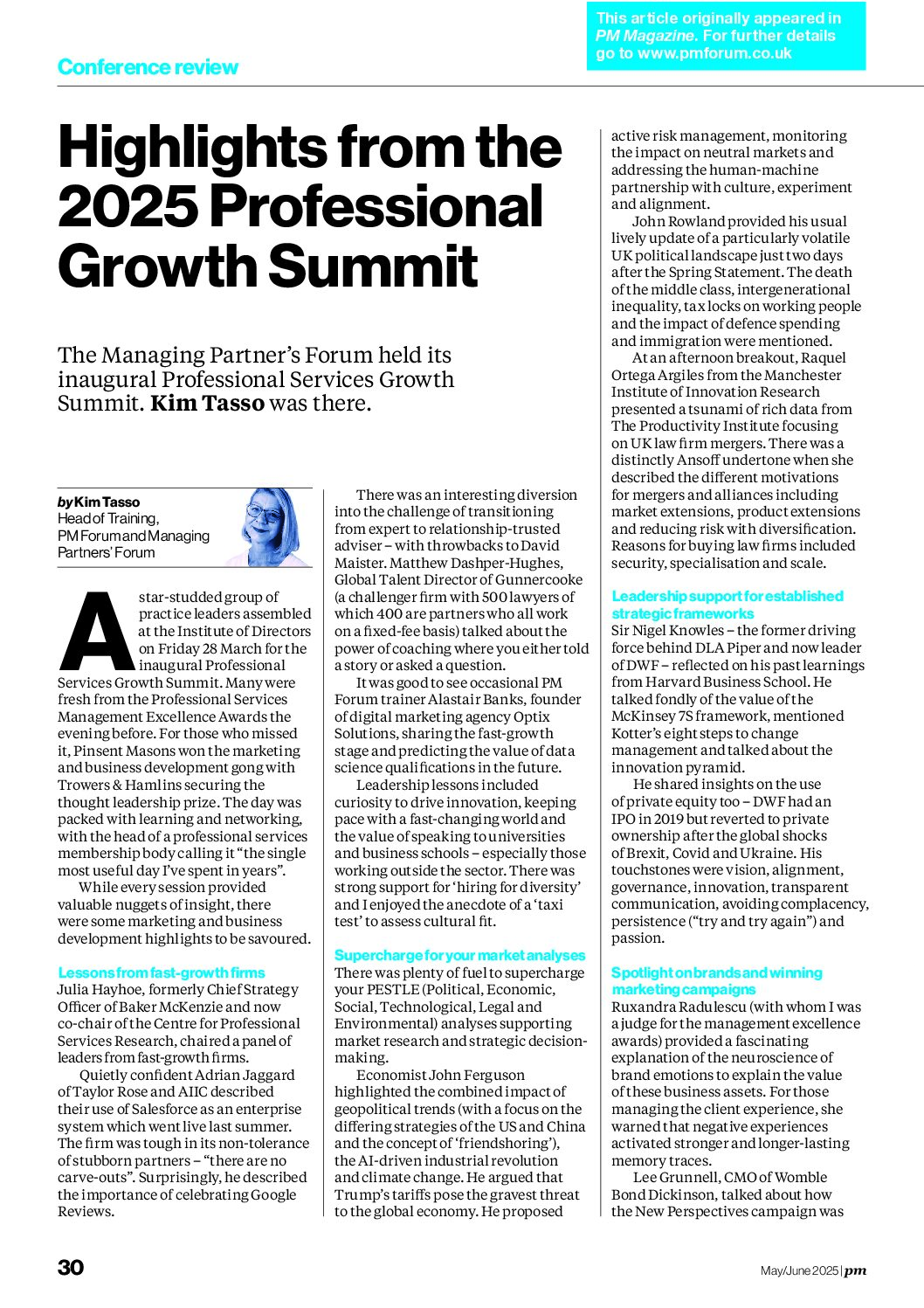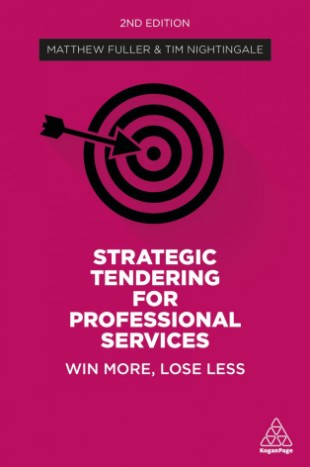Having recently attended Netlaw’s Key strategies for law firms conference http://kimtasso.com/key-strategies-for-law-firms-netlaw-conference-report I was keen to see whether the accountants were concerned with the same issues.
Chatham House rules were in place for this event so it is not possible to attribute the comments to particular individuals but amongst the speakers were: Gavin Hinks (Editor of Accountancy Age), Andy Raynor (CEO of RSM Tenon), Peter Gillman (MD of Price Bailey), Paul Windsor (Partner, WSM Partners), Peter Townsend (MD Duncan Topliss), Rakesh Shaunak (Principal, Macintyre Hudson), Richard Messik (RFM Associates), John Whiting (Head of Office of Tax Simplification), Scott Barnes (CEO of Grant Thornton), Mandy Mitten (MD, Mitten Clarke) and Glenn Collins (Head of Advisory Services, ACCA).
With a theme of “Thriving not surviving” it was clear that despite a bit of a doom and gloom review of developments within the market (and several times the lack of activity within the restructuring and insolvency market was noted with surprise), the focus was on growth for the future. The majority of firms present were at the small and medium sized end of the market.
Leadership
Without using the word “value proposition”, it became clear that this is fundamental for success. Equity investors had indicated firms that could show:
- 3-5% growth through the economic cycle
- 80-90% recurring fees
- Low asset dependency
- Opportunity to roll up (merge and acquire)
- Low revenue risk
would be of interest and it was noted that many professional firms would meet this criteria so we could expect more transactions here. Early on the importance of focusing on the market needs and adopting a “corporate” style of management was stressed, which was good news in the light of many firm’s preoccupation with internal partnership politics.
Leaders were urged to concentrate on strategy, direction, culture, succession, creativity and reinvention. I liked the use of the Einstein quote here “The definition of insanity is doing the same thing again and again and expecting a different outcome”.
There was some discussion about whether the title of “managing partner” should be dropped in favour of chief executive and whether seeking consensus on decisions – where folk were likely to cling to the past and slow decision making processes – would enable firms to get there fast enough. Firms were urged to consider the processes of choosing a leader who had “the ambition to succeed but a fear of failure” rather than leaving it to necessity, accident or politics and to allow the leader to achieve an 85% success rate with “a fast no being preferable to a slow maybe”.
Leaders were urged to use the key questions of “Why?” and “What if?” to guide their focus and to be like time travellers so scenario planning would seem to be the order of the day.
Beating the Big Four
Personally, I found the “Big Four Bashing” that was an undercurrent throughout the day a little tiresome – I think that we can all learn a lot from them. However, this was the title of one of the panel sessions and some of the ideas discussed included:
- Adopting a more personal and friendly style with clients – like having audit staff exchange pleasantries and talk to accounts and other staff
- Encouraging staff at all levels to use common sense – exactly how this was to be achieved was not elaborated upon
- Providing direct and fast access to specialists – there was a scary anecdote about one large firm partner agreeing with a client that getting a response from the tax team was difficult
- Engendering credibility and referrals by working with larger and better known players in the market
- Developing a specialism – the importance of developing a niche was a recurring theme throughout the day
- Immersion in a sector – supporting the niche strategy, it was important that staff “lived and breathed” the commercial issues facing those in the target sector
- The value of brand – I was pleased to note that this was in the proper sense – i.e. an all encompassing philosophy affecting all client touch points and internal processes – rather than as a sticking plaster logo
So the key benefits of a non-Big 4 solution were distilled down to: continuity of staff, a more personal relationship with and greater accessibility to senior staff, a single point of contact, less cost and more value, specialist expertise, local familiarity and access and responsiveness.
Whilst low-balling was raised an issue, and the encroachment of the Big Four on the SME and OMB markets, there didn’t seem to be a cohesive strategic response offered.
The changing business model
I was disappointed with this session. I had hoped to see some helpful insights into the changing business model with new ways of working, the removal of the billable hour and ideas around new services and markets. However, the focus was on combining forces with other firms to generate a network of offices. So nothing really new there then.
There was an acknowledgement that there are changing client expectations, changing work practices, the possibility of multi-disciplinary practices, the importance of service quality rather than technical quality (which is assumed), skills and specialisms as important as experience, the opportunities from leveraging intellectual capital and the need for a certain scale/footprint.
This session did, however, outline a potential formula for success:
- Clarity on the market offering – primarily around key sectors
- An expanding service range – beyond the confines of regulatory support
- Differentiation through total quality service
- Diversification into new areas
- Effective positioning within key markets – possibly through branding
Using online and mobile technologies to improve client service delivery
I choose this workshop (compared to the others which were on marketing and sales culture) because I was keen to learn to what extent these technologies were being adopted in the accountancy market. And whether they were being used to for innovation and differentiation and to modify the value proposition.
Unfortunately, while many were familiar with some of the topics (and everyone admitted thankfully to accessing emails through their smart phones), there were more who did not understand the basics of cloud computing and the debate focused on data security and encryption issues. The limitations of various accounting software practices in operating in new ways was a main focus on the debate and some snippets on useful tools and the cost benefits of software as a service were exchanged.
Social media
Again, I was a little disappointed here as most delegates appeared to need the rather elementary introduction to the various tools and platforms. None of the excellent examples of effective social media deployment amongst accountants that I was aware of (and have mentioned in various blogs in the past – I took a note to persuade some of the leaders in the field to write short case studies for the benefit of the profession as a whole so watch this space) were mentioned. A few good examples were provided from the legal sector and also from www.cheapaccounting.com. The key messages were: content, connections, conversations and call to action. Here’s a blog I wrote recently for accountants interested in using LinkedIn more effectively: http://kimtasso.com/a-beginners-guide-to-linkedin-for-lawyers-accountants-and-surveyors
Tax simplification project
With this session immediately after lunch I was doubly doubtful of my ability to connect with the content. However, the speaker was delightfully animated and passionate about the subject and provided a helpful outline of the programme overall and the progress so far. I am sure that the many tax consultants in the room were reassured that their livelihoods were not in jeopardy from Government action in this area.
Apeing the big players
A larger firm was put in the hot seat while questions were fired about their recipe for success and their strategies were examined. Key themes that emerged included the need for ambitious profit targets, objectives for client satisfaction in “the zone of affection”, rationalisating and refreshing the office network, cluster meetings to help partners engage in a centrally developed strategy, clarity on the target market and creating “clear blue water” between competing firms.
The modern partner
Starting with the statement that “you get the partners you deserve”, there was a lively discussion about the attributes of a modern accountancy firm partner. The challenge of having specialists but avoiding a collective of sole practitioners was an early discussion point as well as the older age profile of many of the current partners (50% of partners are over 50).
The ability to “cuddle clients” was mentioned as well as the need for KPIs on the use of non chargeable time. There was a call for more CPD time to be spent on management and soft skills rather than on technical updates and accountancy firms were seen to be behind the law firms in this respect.
Some key attributes discussed included: personality and cultural fit, charisma, team sports approach, self starter, leadership, motivator of people and strong commercial awareness. I liked the quote here that “You can’t put in the bits that God left out” and there was a nice reference to innovative “Disney Day” training programmes.
There was a general acknowledgement that many firms do not tell younger accountants what they are expected to do to achieve partnership, nor what they should do once they achieve it. Although one or two of the participants indicated that they had director training programmes.
There were the inevitable grumbles about the burden of compliance taking time that might be spent in more market and client facing activities but a good few comments about things that non partners were doing that really added value to the client relationship and the comment “think laterally around who is in front of the client”.
By the way, I noticed that the closing date for The British Accountancy Awards 2011 is 29th July for the ceremony on 30th November. Further details at www.britishaccountancyawards.co.uk.









